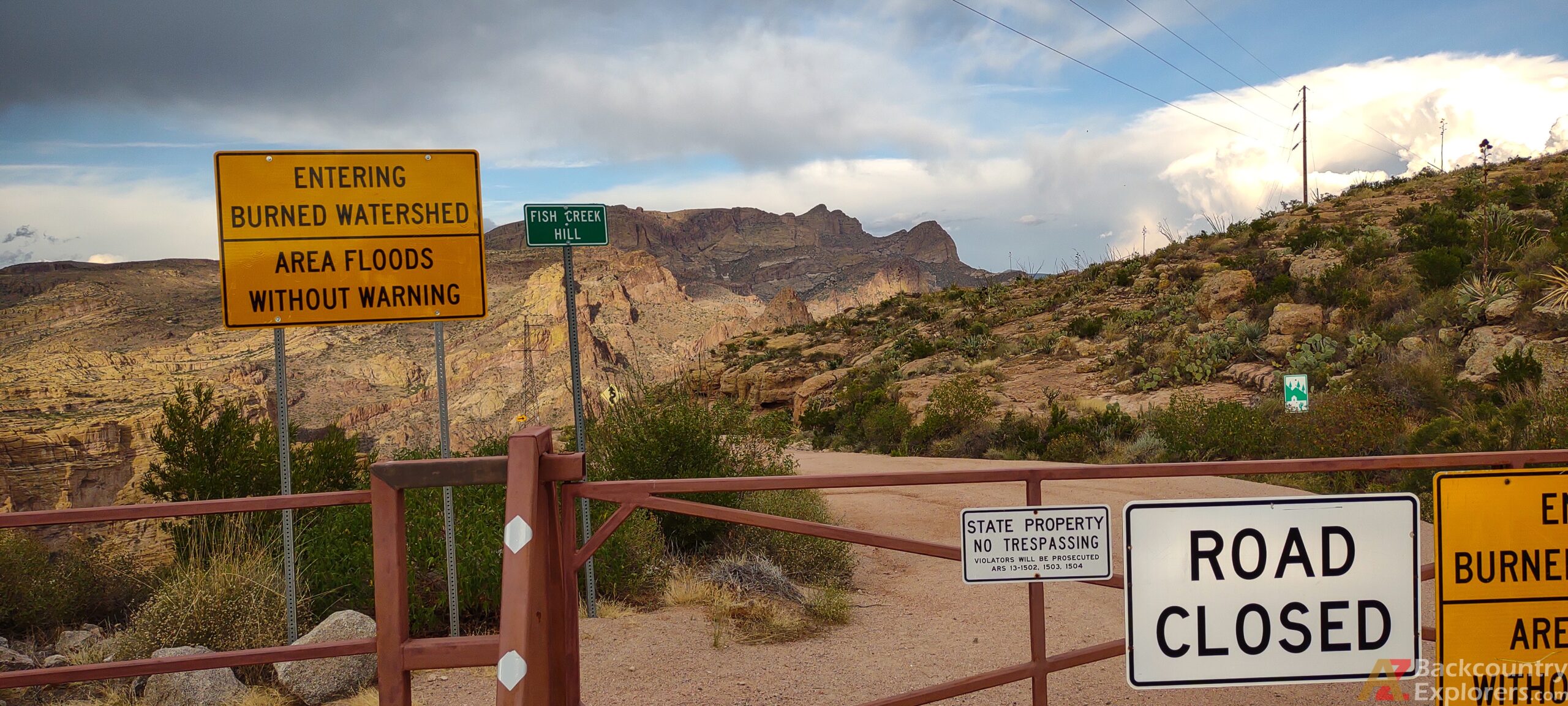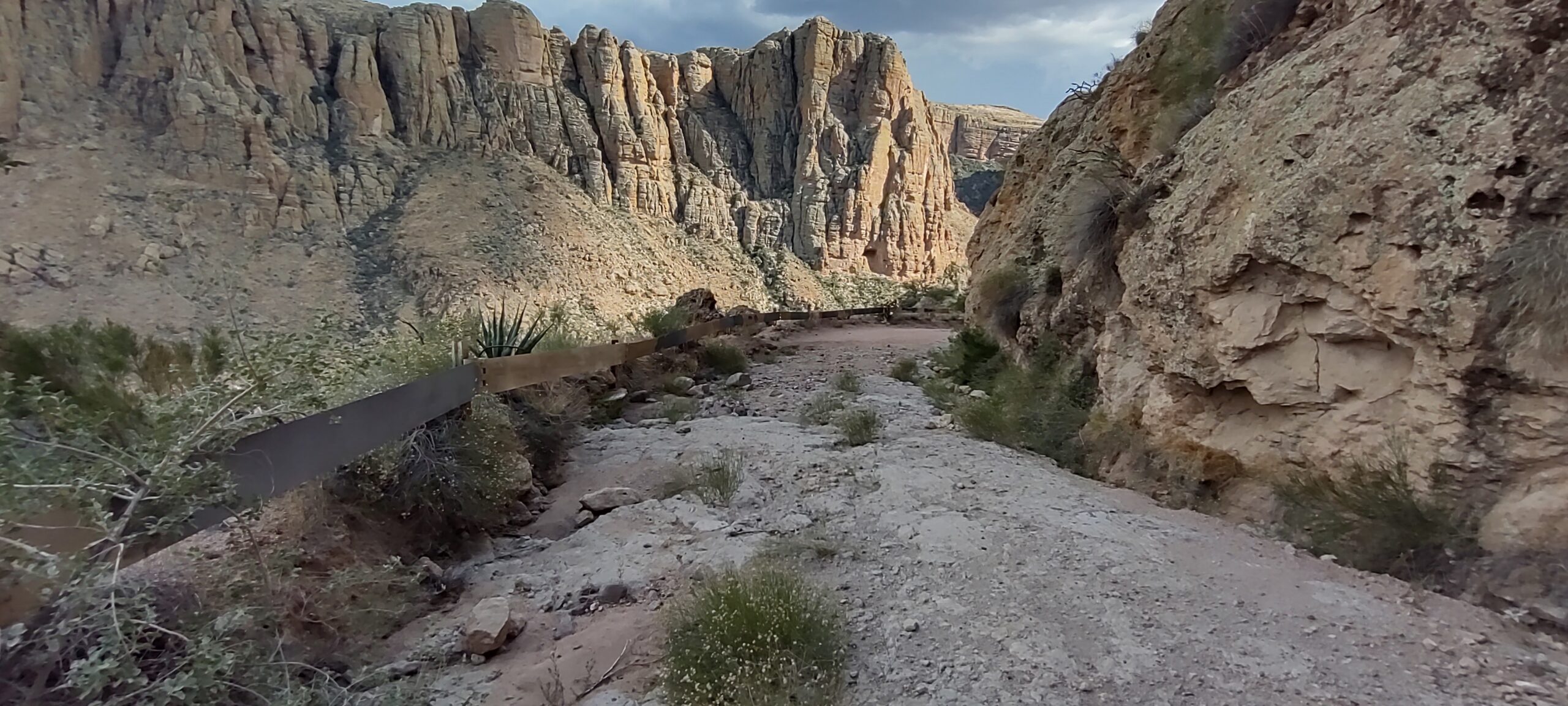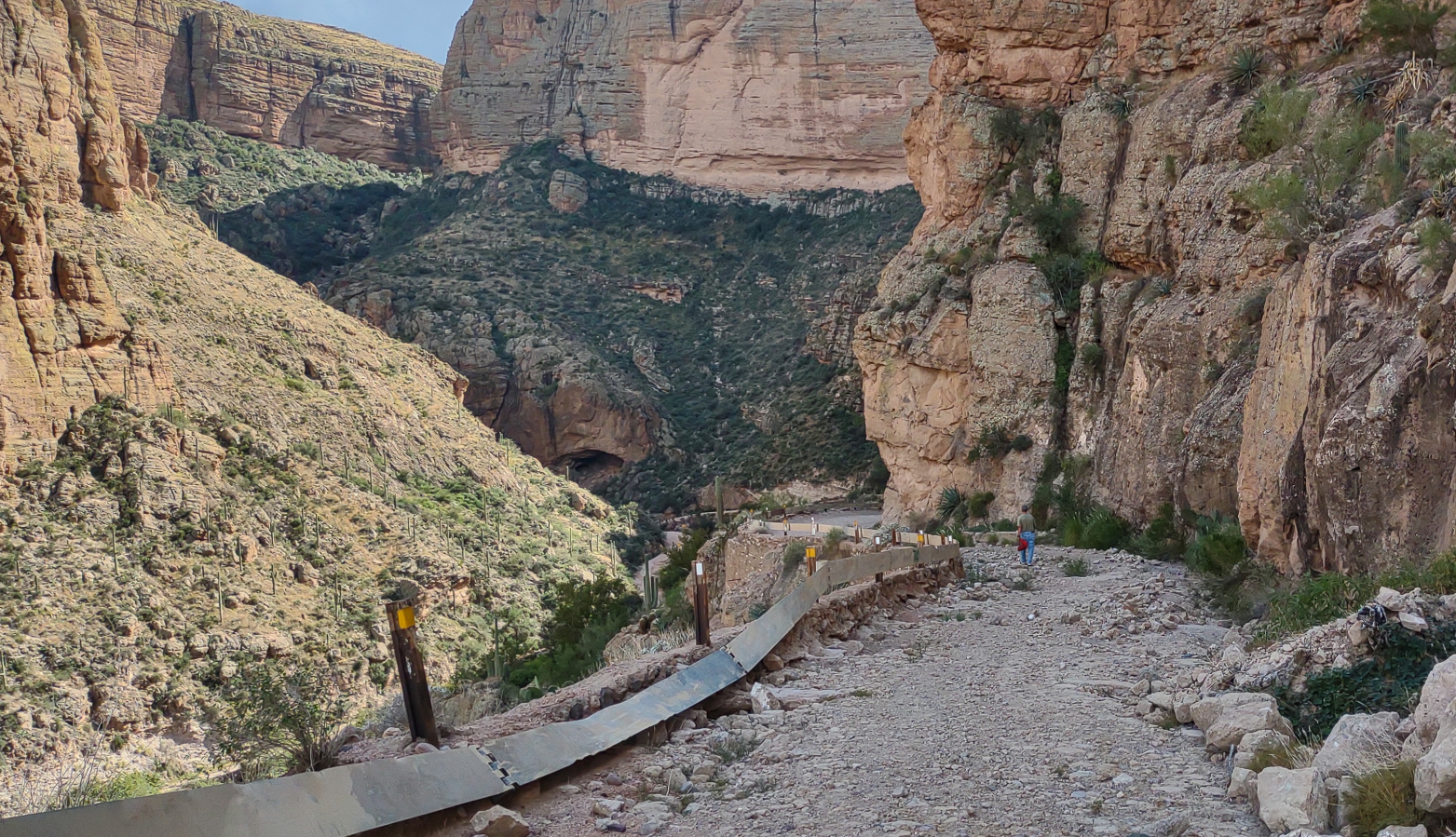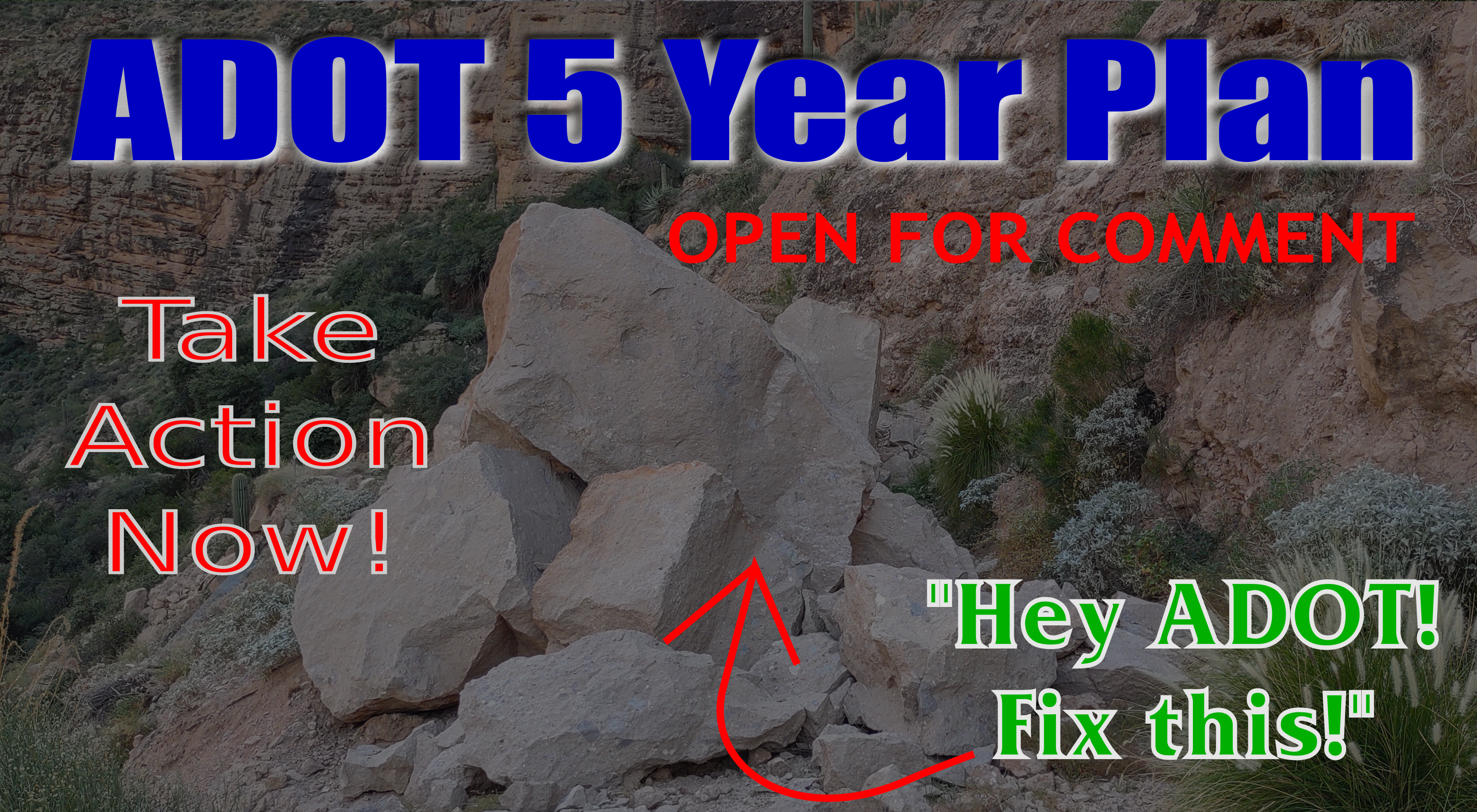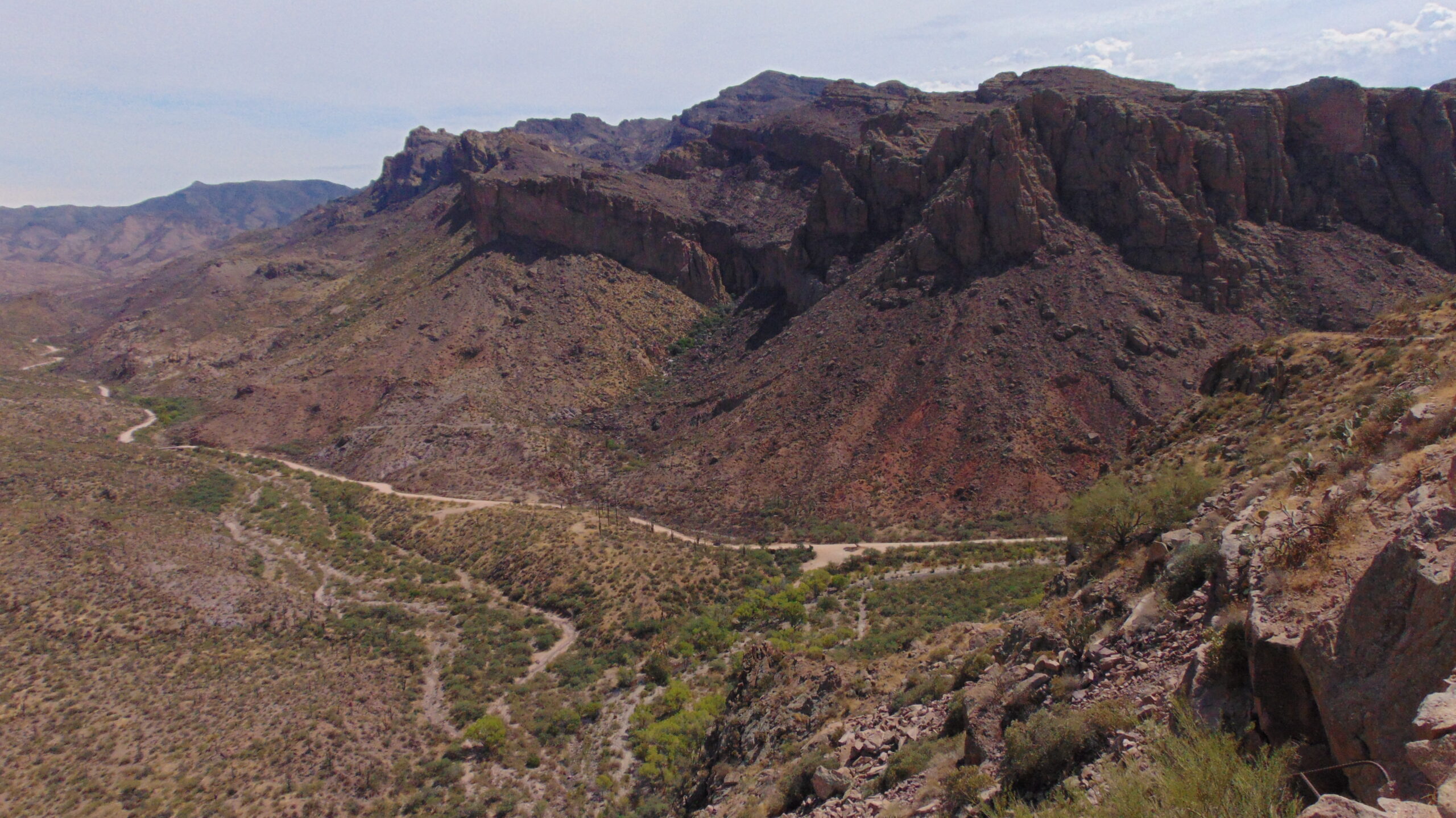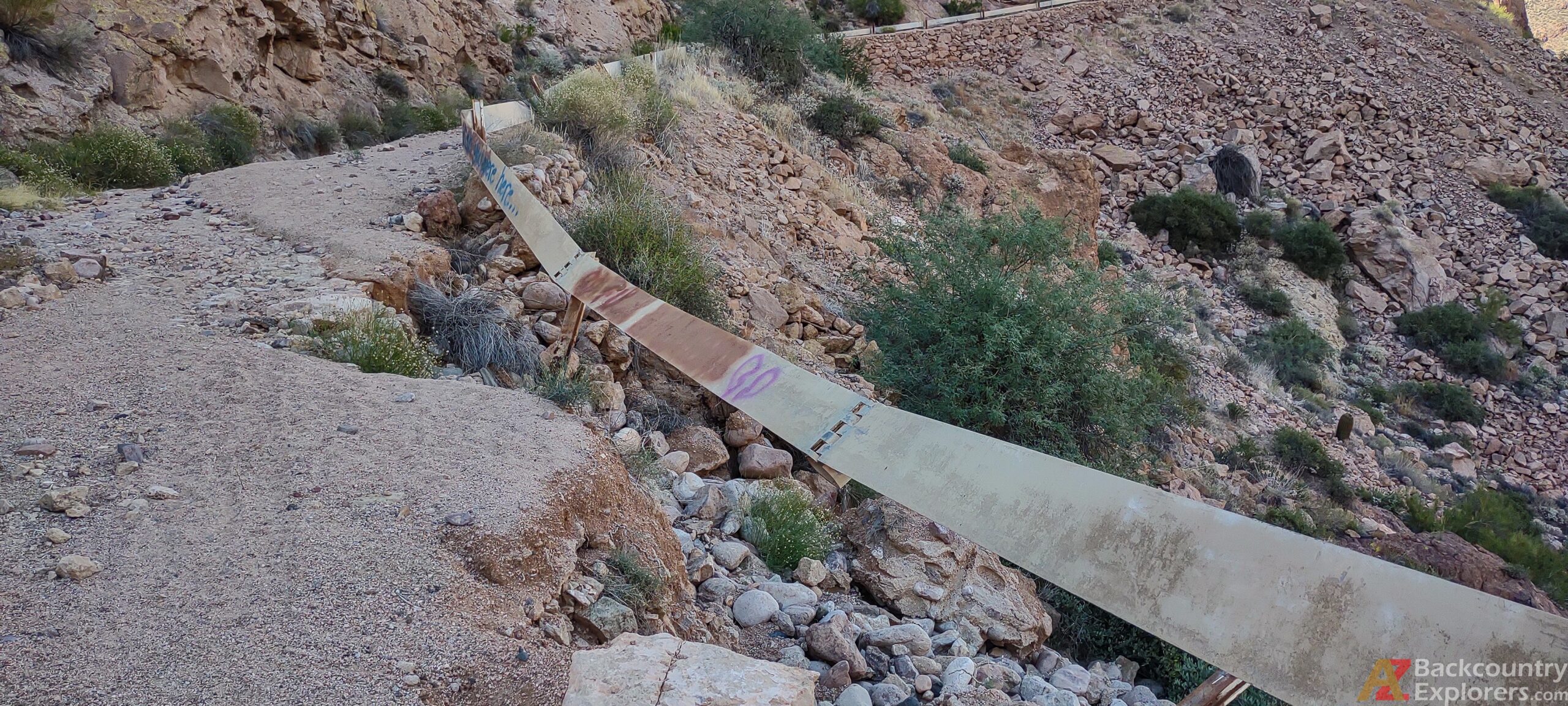Your cart is currently empty!
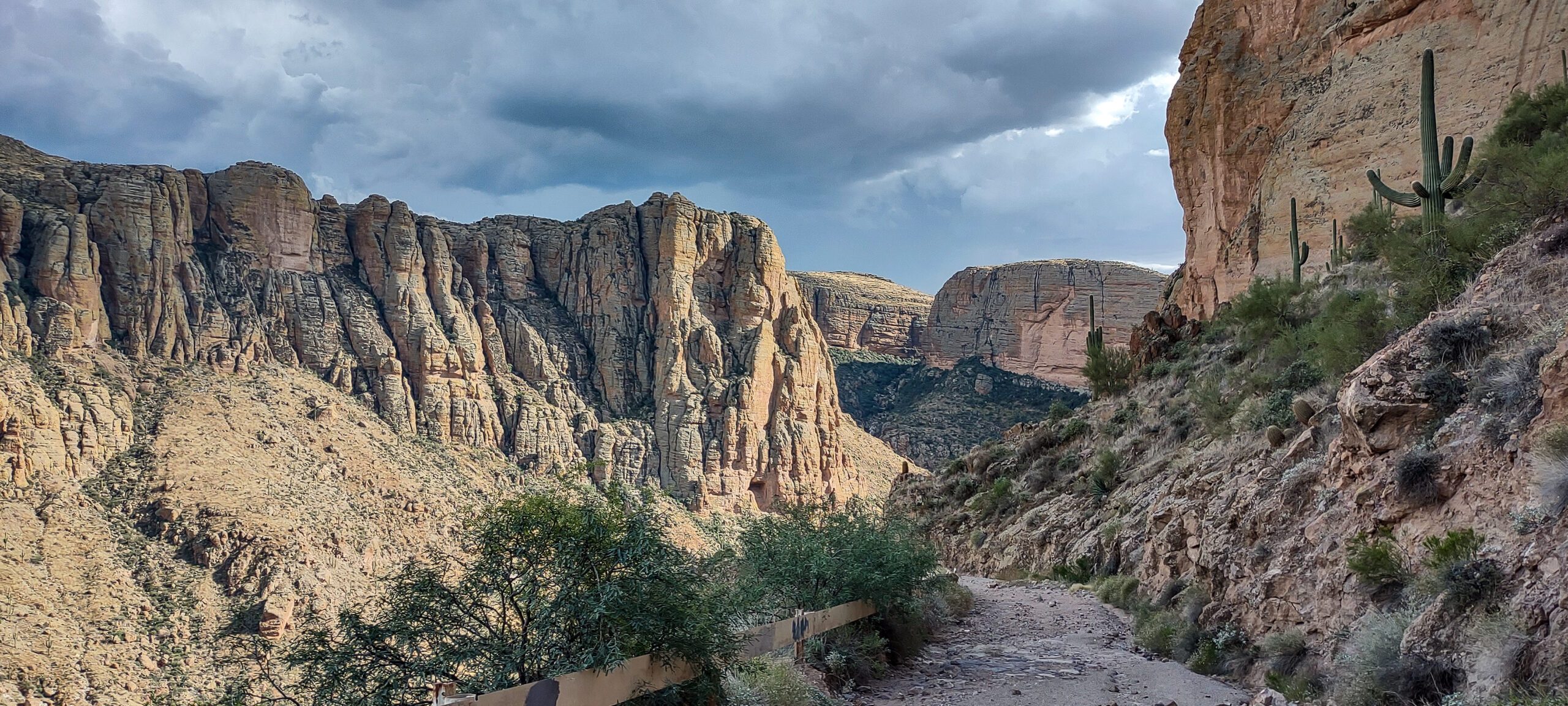
We need your help reopening Apache Trail.
We, the people, have given the state of Arizona the benefit of the doubt, and the Arizona Department of Transportation has let us down. Now, it’s time we take action to protect access on our historic Revised Statute 2477 Highways, including Apache Trail.
A National Treasure
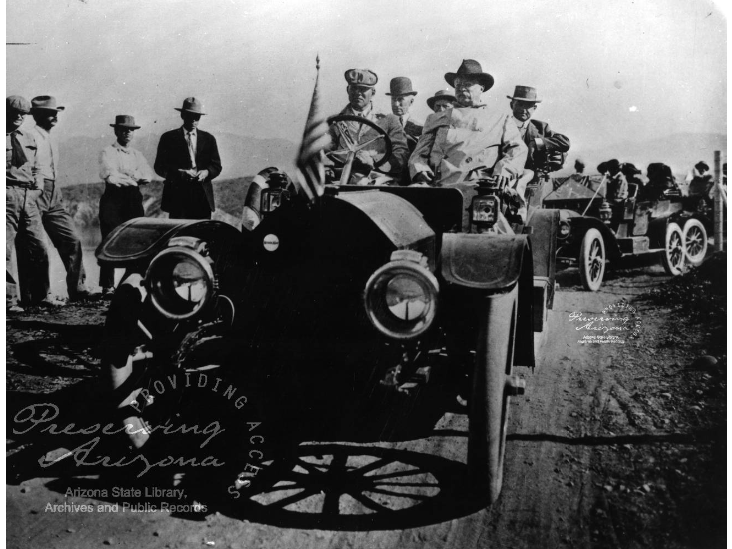
State Route 88, better known as the Apache Trail, is an unpaved state highway that travels from Apache Junction to Roosevelt Lake, winding through the Superstition Mountains in Arizona. Its most known for its sheer drop-offs, tight corners, mysterious history, and the impossible shelf road down Fish Creek Hill. To some, the Apache Trail is a treacherous experience, but to others, it’s a portal that takes you back in time.
The Apache Trail was made possible by the passage of the 1902 Reclamation Act. The Department of Reclamation declared one of their first project, the Tonto Reservoir, and Tonto Dam. The original road was a pack trail developed in the 1860s by ranchers and pioneers Lewis and Pranty. It wasn’t until 1904 that the road was reconstructed along today’s path to accommodate freight to construct the Tonto Dam. The Tonto Freight road, now Apache Trail, was built by over 300 men, including 50 Apache laborers. Over 500 private citizens indebted themselves on behalf of the cities and towns in the region for $300 to secure bonds with local banks to build the road.
The Tonto Freight Road was finished by 1905 for under $90,000, and construction on the Tonto Dam began immediately. In 1911, the Tonto Freight Road and Tonto Dam were completed. At a ceremony at the base of the dam, which he attended himself, the dam and reservoir were dedicated to then-president Theodore Roosevelt. A majority of the 1860s wagon road is now submerged under Canyon Lake but can still be found as the access route to Horse Mesa.
In 1920 the Apache Trail was recognized by Arizona as a state highway and officially labeled Apache Trail in honor of the 50 Apache Laborers who helped build the road. State Route 88 was considered significant to the surrounding counties, cities, and towns. This designation brought many revisions including several pullouts and vista points along the road, guard rails, and other improvements. Later, in 1995 the Apache Trail was designated a National Scenic Byway and was recognized by the US Department of Transportation for its historical, cultural, scenic, and recreation qualities.
Indefinite Closure
In June 2019, the fifth-largest wildfire in Arizona history devastated the Superstition Wilderness and burned 123,832 acres of pristine wilderness. The human-caused Woodbury wildfire consumed everything in its path right up to State Route 88. A short while later, in September of 2019, the remains of tropical storm Lorena dumped an unusual 5 inches of rain in a couple of days, causing severe washouts and a large boulder to fall off the mountainside of Fish Creek Hill. The Arizona Department of Transportation (ADOT) promptly closed the road “indefinitely” and erected a heavy metal gate under padlock equipped with a No Trespassing sign.
It’s important to note that the fire never burned Fish Creek Hill where the rockfall occurred; therefore, there shouldn’t be any soil stability issues on Fish Creek Hill. Below, you can examine a map that depicts the burn scar of the Woodbury Fire in orange and the closed section of the road and the precise location of the rockfall. The burn scar data is provided directly from the National Interagency Fire Center.
ADOT | Apache Trail doesn’t meet the state’s definition of a State Route
An Arizona Department of Transportation Low-volume State Route study conducted in 2017 suggests the Apache Trail and 21 other historical highways be “turned over to other jurisdictions.” In particular, ADOT recommends handing the Apache Trail to the US Forest Service. ADOT argues that because Apache Trail does not get enough traffic, it doesn’t justify keeping the road in the State Route System. They also say that there is limited sight distance, infrequent passing opportunities, and the bridges, steep grades, and steep drop-offs are not traffic friendly. ADOT is claiming that low-volume roads should not be designated as state highways, and no State Highway should be for the exclusive benefit of private users.
The study revealed that an estimated 154 vehicles per day travel the Apache Trail with an average annual growth rate of 3.2%. The study also analyzed a history of automobile accidents on Apache Trail. Seven total incapacitating incidences occurred, including one fatality and five motorcycles in the past five years. The study also analyzed investment history claiming a total of $500,530.91 for maintenance on the unpaved portion and $671,275.82 for the paved part with an average annual cost of $231,398.06 and $8,023.51 average annual cost per mile.
Among these 22 roads are also the Coronado Trail aka The Devil’s Highway SR191, the Desert to Tall Pines Road SR288, and Pinaleo Swift Trail SR366.
Download the Low-Volume Route Final Report below.
Apache Trail is deteriorating fast.
We can not wait much longer to repair Arizona State Route 88 Apache Trail. Currently, about 18 inches of topsoil are missing from the road surface, exposing the cribbing that holds the road on the mountain. This has created a channel for water to flow down the road like a river. The cribbing has given away in many places, and some road sections are starting to collapse.
Without immediate attention, the historic Apache Trail is in danger of sustaining more significant damage that could cost millions more to repair. Additionally, if this erosion continues, the road could wash completely off Fish Creek Hill.
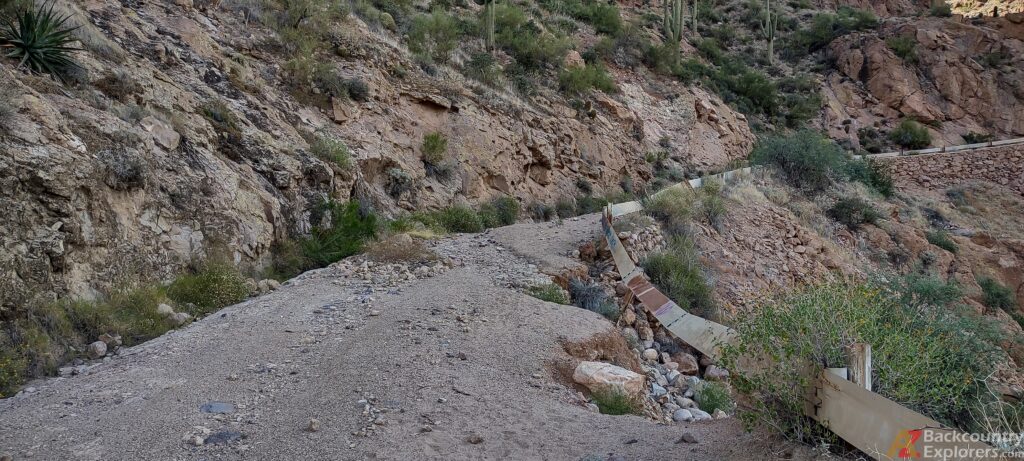
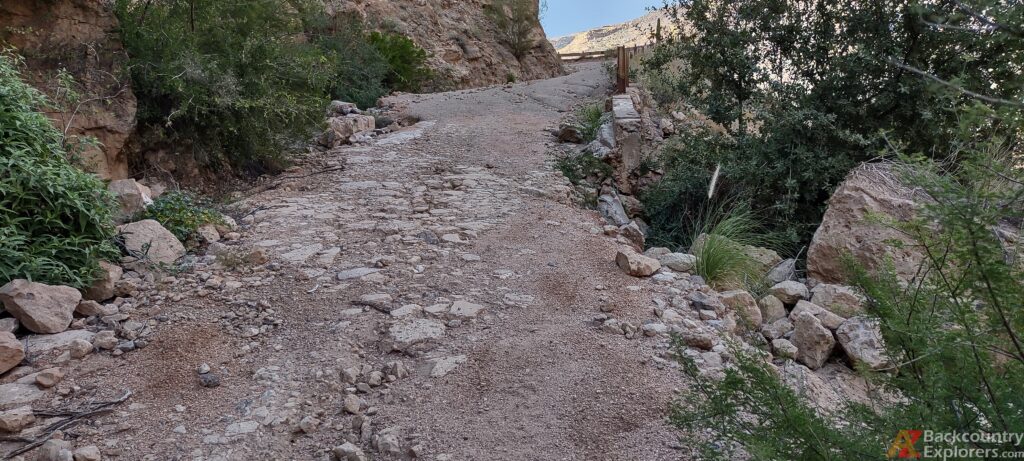
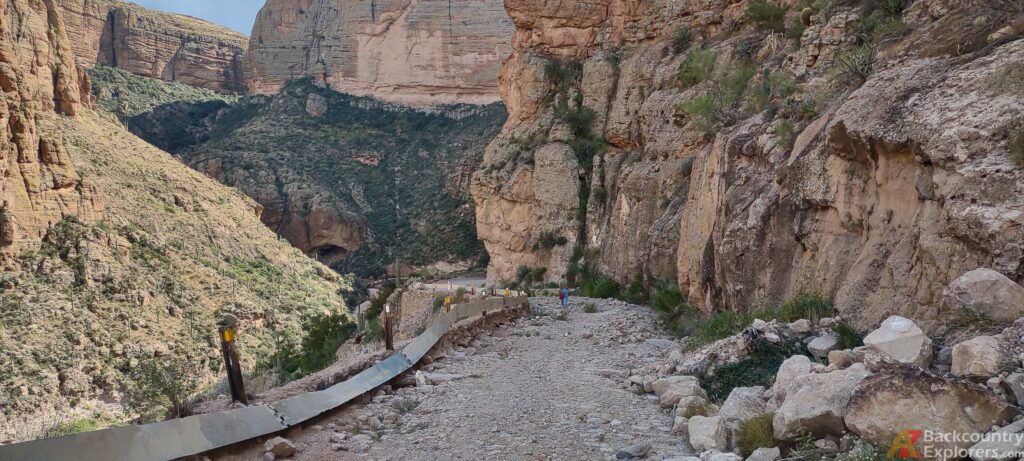
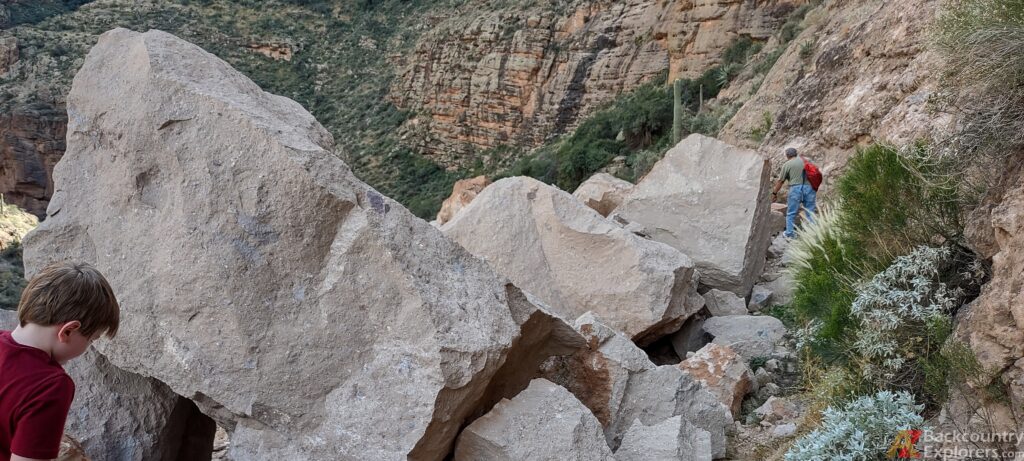
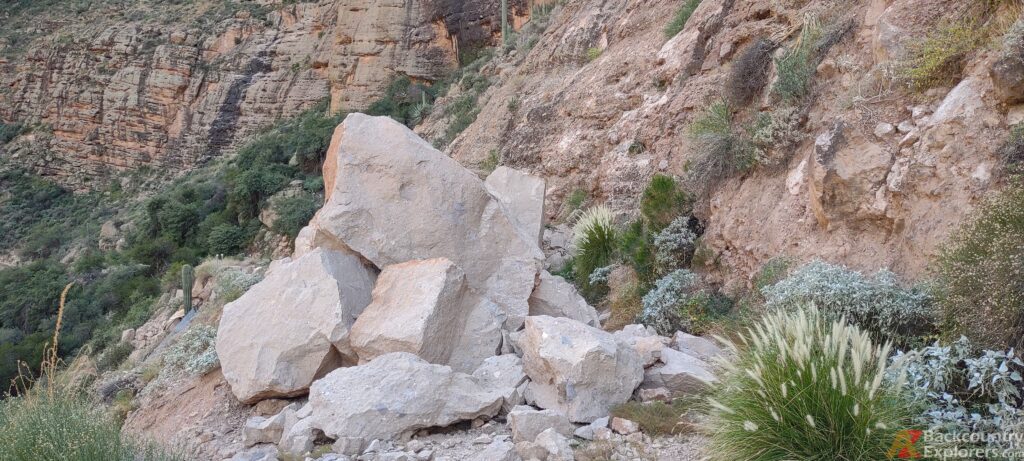
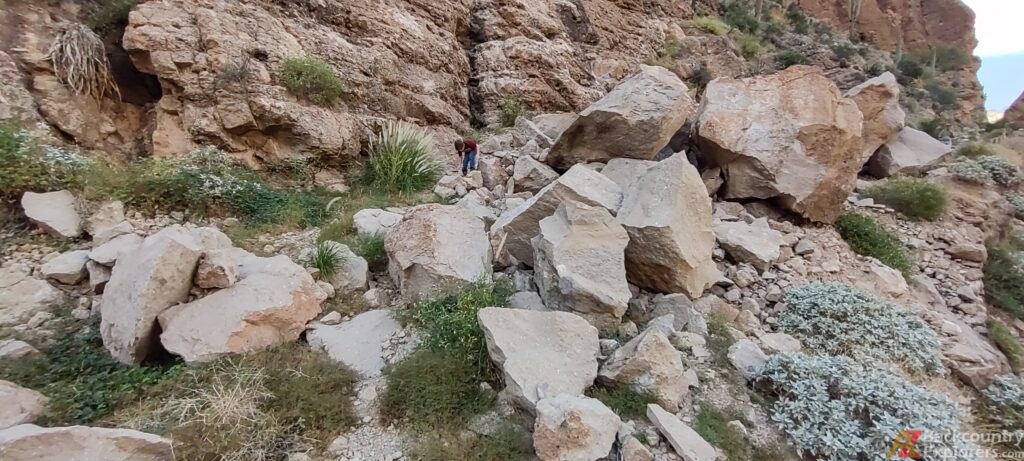
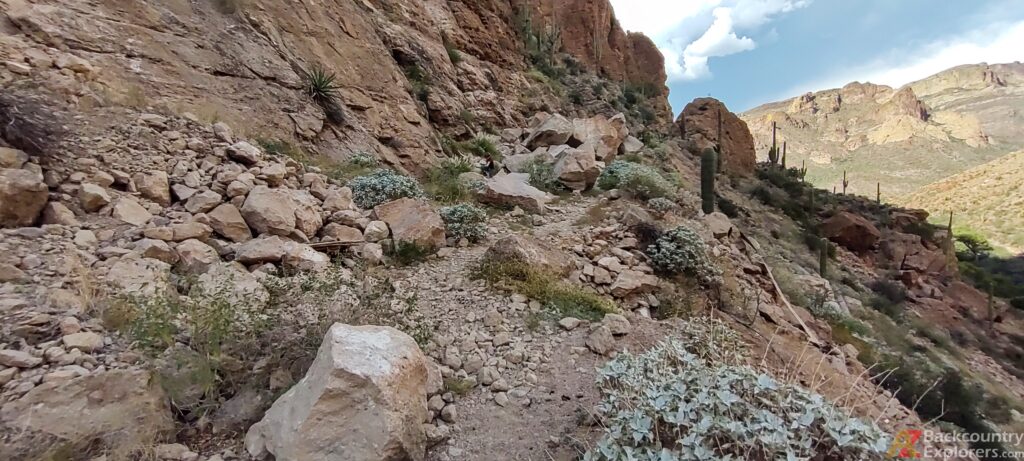
Repairs pending studies | ACTION NEEDED
Arizona Governor Doug Ducey is reluctant to appropriate money to repair this portion of the road. ADOT claims the road will become washed out during the next rain because of the lack of vegetation along the route. Instead of fixing the road, the governor wants studies completed to determine the feasibility of repairing the road. However, ADOT is not talking about restoring the road in its current condition. The plan is to pave the road, widen corners, install dynamic speed signs, and increase the line of view by cutting back rock walls around corners.
The Arizona legislature passed SB 1820 this year, approving $700,000 for studies. ADOT claims that they must wait to completed soil studies before any work can begin. We believe the current condition of the road, as seen above, does not sanction a long-term strategy as a realistic approach to reopening the road. We believe that if soil stabilization is an issue, the state should clear Fish Creek Hill and maintain the road as is until vegetation reestablishes and their desired improvements can be accomplished. We believe the longer we wait, the better chance the Apache Trail will sustain even more damage, and the state of Arizona will eventually abandon it for good.
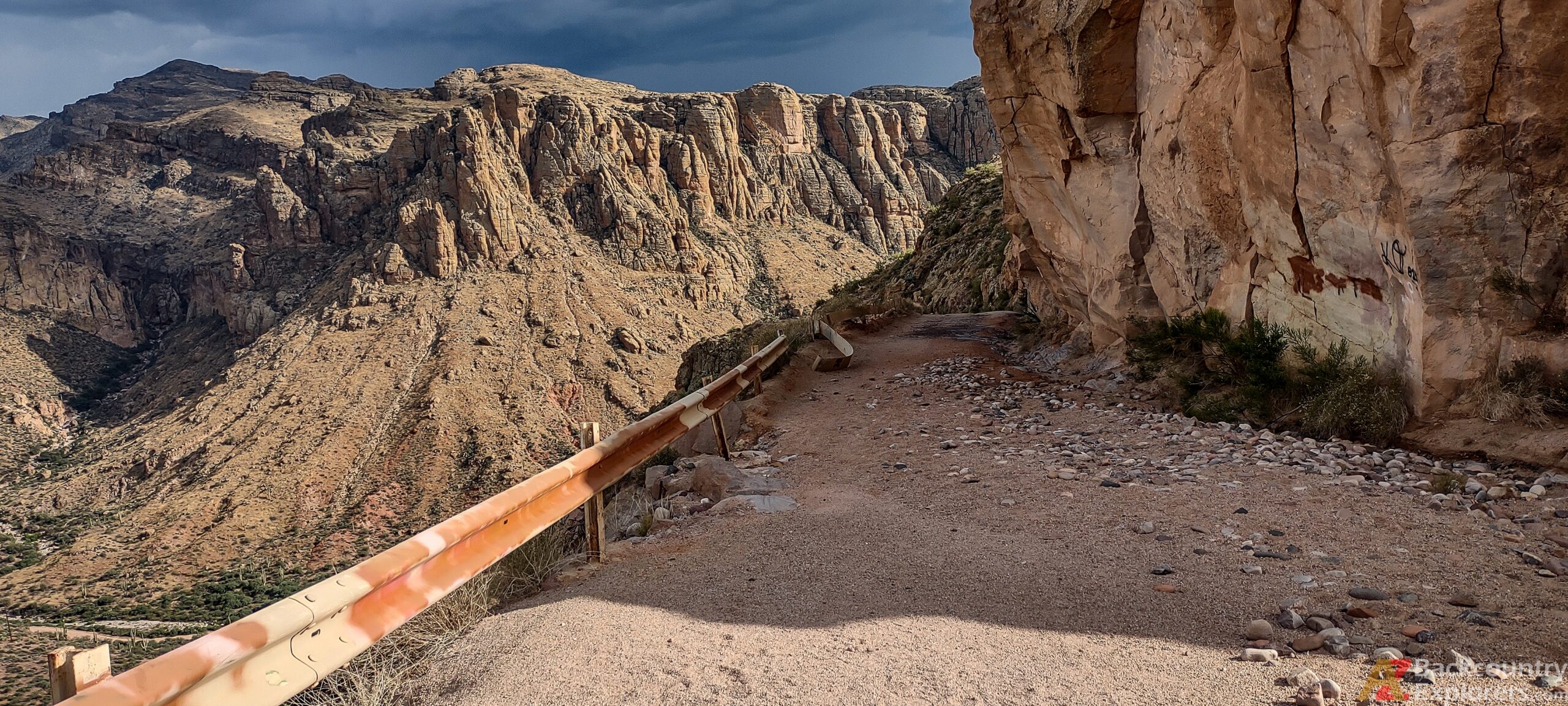
We want to send a message to Governor Doug Ducey and ADOT.
“Don’t cast aside our historical roads!“
2137 Messages Sent
Tell the Arizona Department of Transportation and the Arizona Governor to reopen Apache Trail
Apache Trail Updates
Preserving the Magic: Protecting the Apache Trail for Future Generations
Attention, nature enthusiasts and road warriors! Is the awe-inspiring beauty of the Apache Trail calling your name? We have a chance to contribute to its rejuvenation and make it even better. Let’s rally together and submit comments to the Arizona Department of Transportation (ADOT) urging them to clear the rock falls and repair the trail,…
ADOT starts studies to repair Fish Creek Hill on the world famous Apache Trail
The Arizona Department of Transportation has initiated a comprehensive study to evaluate the viability of reopening the currently inaccessible seven mile segment of the Apache Trail situated at Fish Creek Hill, as mandated by an Arizona appropriation bill. With the objective of ascertaining the feasibility of this endeavor, the department is diligently examining various factors…
COMMENTS NEEDED ASAP | ADOT 5 Year Plan | No Apache Trail
The Arizona Department of Transportation has released its tentative five-year plan. Please take action now and send your comments to ADOT.
Apache Trail Update | The next phase
We had another productive meeting with political representatives concerning the Apache Trail closure. We are now taking this issue to the next level.
Apache Trail Update | Legislation is coming
We attended our second meeting concerning the Apache Trail with Senator Kelly Townsend and County Supervisor Jeff Serdy at the Pinal County Board of supervisors’ office. It was another productive meet with high hopes for the future of Apache Trail. Senator Kelly Townsend “what do you want?” Republican Senator Kelly Townsend from district 16 attended…
Apache Trail Update | We Are Moving Forward
As many of you may know, we have made an effort to pressure the Arizona Department of Transportation and Arizona Governor Doug Ducey to reopen Apache Trail State Route 88. We are happy to inform you that we are making headway.

